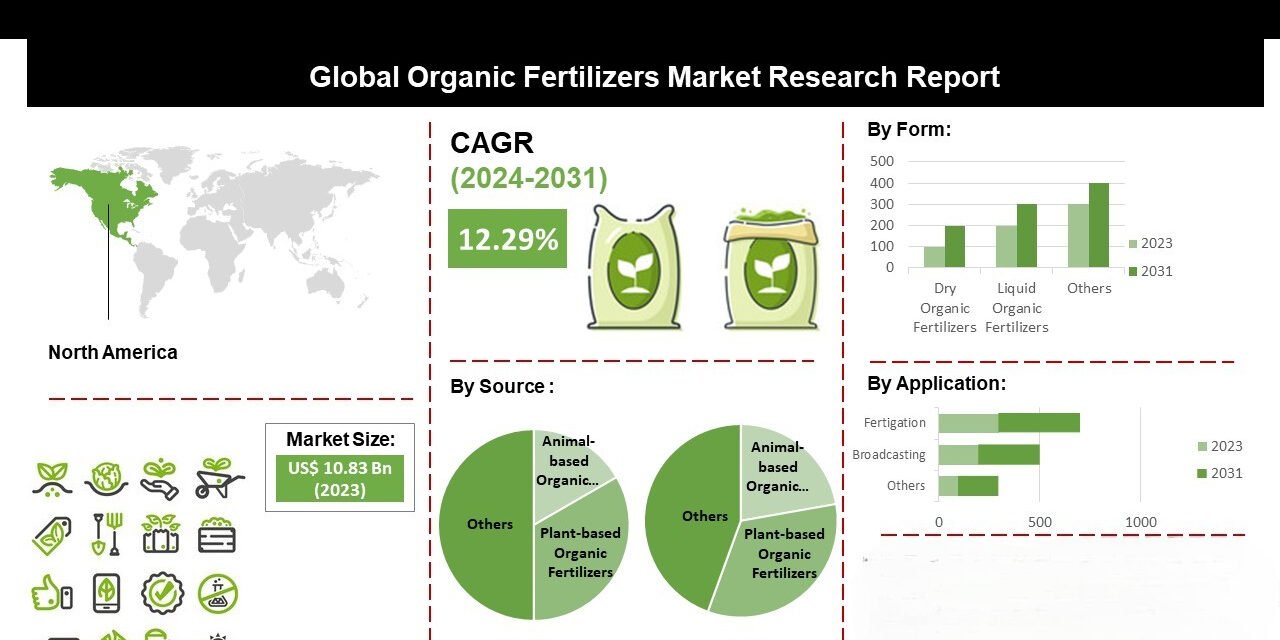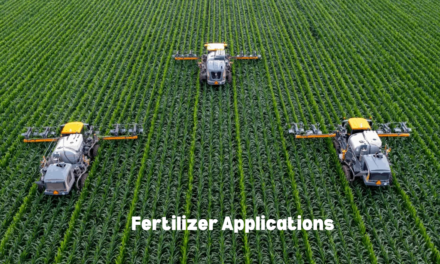The outlook for organic fertilizers in global markets is promising, driven by the increasing emphasis on sustainable agriculture, environmental concerns, and consumer demand for organic and eco-friendly products. Below is a comprehensive analysis of the current trends, growth drivers, challenges, and future prospects for organic fertilizers:
1. Market Growth and Demand
- Rising Demand:
- Growing preference for organic and sustainable farming practices is boosting the demand for organic fertilizers globally.
- Market Size:
- The global organic fertilizer market is projected to grow at a compound annual growth rate (CAGR) of approximately 7-8% over the next decade.
- Regional Insights:
- Asia-Pacific:
- The largest consumer due to the rapid adoption of organic farming practices in countries like India, China, and Japan.
- North America:
- Growing demand for organic produce and government incentives drive market growth.
- Europe:
- Leading in regulatory support and environmental sustainability initiatives.
- Latin America and Africa:
- Emerging markets due to increasing awareness and a focus on soil restoration.
- Asia-Pacific:
2. Key Growth Drivers
- Environmental Concerns:
- Awareness of the negative impacts of chemical fertilizers on soil, water, and biodiversity is pushing farmers toward organic options.
- Government Support:
- Subsidies, grants, and policies promoting organic farming and sustainable inputs.
- Example: The European Union’s “Farm to Fork” strategy aims to have 25% of farmland under organic farming by 2030.
- Consumer Trends:
- Growing consumer preference for organic food increases demand for organic farming inputs.
- Soil Health Restoration:
- Organic fertilizers improve soil organic matter, structure, and microbial activity, ensuring long-term productivity.
- Climate Change Mitigation:
- Reduced greenhouse gas emissions from organic fertilizers compared to synthetic ones.
3. Product Innovations
- Improved Formulations:
- Innovations in slow-release and granulated organic fertilizers for better efficiency.
- Bio-Based Fertilizers:
- Products enriched with beneficial microorganisms like nitrogen-fixing bacteria and mycorrhizal fungi.
- Custom Blends:
- Tailored organic fertilizers catering to specific crop and soil needs.
- Liquid Organic Fertilizers:
- Convenient for foliar application and fertigation in modern farming systems.
4. Integration with Sustainable Practices
- Regenerative Agriculture:
- Organic fertilizers are central to practices that enhance soil health, sequester carbon, and promote biodiversity.
- Circular Economy:
- Organic fertilizers produced from waste streams, such as animal manure, crop residues, and food waste, align with circular economy principles.
- Organic Certification:
- Growth in certified organic farming is directly increasing the adoption of organic fertilizers.
5. Challenges and Constraints
- Cost Concerns:
- Organic fertilizers are often more expensive than chemical alternatives, especially for small-scale farmers.
- Nutrient Content:
- Lower nutrient density compared to synthetic fertilizers requires higher application rates.
- Logistics and Supply Chain:
- Bulkier organic fertilizers pose challenges in transportation and storage.
- Regulatory Variations:
- Differing certification standards and regulations across regions can complicate market expansion.
6. Competitive Landscape
- Major Players:
- Companies like Tata Chemicals, Italpollina, Biostar Renewables, and Coromandel International are investing in organic fertilizer production.
- Small and Medium Enterprises:
- Regional producers and startups focus on biofertilizers and waste-to-fertilizer innovations.
- Mergers and Acquisitions:
- Consolidation in the market as larger firms acquire smaller players to expand their organic portfolios.
7. Technology and Digital Integration
- Precision Agriculture:
- Integration of organic fertilizers with precision farming tools for optimized application.
- IoT and Data Analytics:
- Monitoring soil and crop health to guide organic fertilizer use.
- Advanced Composting:
- Technologies that accelerate organic matter breakdown, improving the quality and nutrient content of compost-based fertilizers.
8. Environmental and Economic Benefits
- Reduced Environmental Footprint:
- Organic fertilizers lower the risk of water pollution and greenhouse gas emissions.
- Waste Management:
- Repurposing organic waste into fertilizers reduces landfill use and methane emissions.
- Economic Opportunities:
- Growing demand creates new markets for bio-based and locally sourced organic fertilizers.
9. Regulatory Support
- Global Standards:
- Increasing harmonization of organic farming and input standards boosts international trade in organic fertilizers.
- Subsidies for Organic Inputs:
- Governments are incentivizing farmers to adopt organic fertilizers through financial support.
- Carbon Credit Programs:
- Farmers using organic fertilizers in sustainable practices may benefit from carbon trading schemes.
10. Future Trends
- Integration with Biofertilizers:
- Combining organic fertilizers with microbial inoculants to improve nutrient availability and plant health.
- Smart Organic Fertilizers:
- IoT-enabled formulations for real-time monitoring and nutrient delivery.
- Increased Adoption in Urban Agriculture:
- Use of organic fertilizers in rooftop gardens, hydroponics, and urban farms.
- Focus on Marginal Lands:
- Organic fertilizers improve productivity in degraded soils, expanding arable land use.
11. Regional Outlook
- Asia-Pacific:
- The fastest-growing market due to government initiatives and high agricultural activity.
- North America and Europe:
- Established markets with strong regulatory and consumer-driven growth.
- Africa and Latin America:
- Emerging markets with significant potential due to agricultural expansion and sustainability goals.
Conclusion
The global organic fertilizer market is poised for substantial growth as sustainable agriculture becomes a priority for governments, industries, and consumers. While challenges like cost and nutrient density persist, advancements in technology, policy support, and awareness are driving adoption. Organic fertilizers are expected to play a central role in addressing global food security, environmental sustainability, and soil health, ensuring a more resilient agricultural future.
Hashtags
#OrganicFertilizers #SustainableFarming #EcoFriendlyFarming #GreenAgriculture #NaturalFertilizers #OrganicFertilizerTrends #GlobalFertilizerMarket #OrganicAgricultureGrowth #AgriMarketOutlook #FutureOfFertilizers #SustainableAgriculture #ClimateSmartFarming #EcoFarmingPractices #SustainableFertilizers #GreenFarmingSolutions #HealthySoilsHealthyCrops #SoilHealthMatters #OrganicSoilEnhancers #CropNutrition #NaturalSoilBoost

















